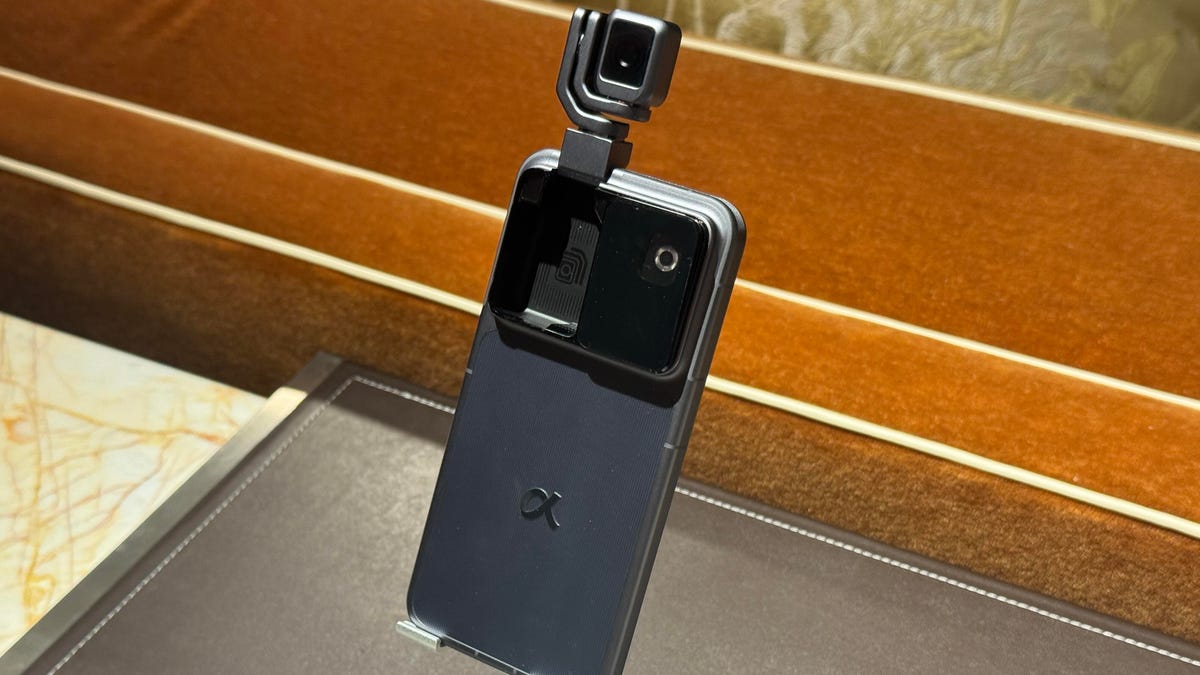Technologies
Facebook AI puts ‘primates’ label on video of Black men, in what firm calls ‘unacceptable’ error
The news comes as social networks grapple with racist content and critics attack automated systems over bias.

Facebook users who recently watched a video featuring Black men were served an automated prompt that asked if they’d like to «keep seeing videos about Primates,» a mistake the social network called «unacceptable» in statements to news outlets.
The video, posted last June by UK tabloid The Daily Mail, shows Black men in disputes with white police officers and civilians, The New York Times reported late Friday. Facebook apologized for the prompt and said it’s disabled the AI-powered feature and is investigating to ensure the problem doesn’t reoccur.
«As we have said, while we have made improvements to our A.I., we know it’s not perfect, and we have more progress to make. We apologize to anyone who may have seen these offensive recommendations,» Facebook said in a statement sent to media organizations.
The news comes as Facebook and other social media companies continue struggling to address concerns that they’re not adequately tackling racism on their sites. Earlier this year, Facebook, Twitter and others were criticized for failing to stop anti-Asian hate on their platforms amid the coronavirus pandemic. Sites were also censured in July for not shutting down racist abuse after England’s loss in the Euro Cup final.
The botched Facebook prompt is also another example of problems around AI and race. Facial recognition systems, including those used by law enforcement, are known to have trouble accurately identifying people of color, putting them at risk of being wrongly accused of crimes.
Related: Why tech made racial injustice worse, and how to fix it
More broadly, the error underlines concern about whether bias is coded into the technologies that play key roles in our lives, such as algorithms used to screen applicants for home loans.
In July of last year, Facebook had said it was creating teams to examine potential racial bias in algorithms and products used by the social network and by Facebook-owned Instagram.
Other tech giants have grappled with gaffes by their automated systems. In 2015, Google apologized when an algorithm in its Photo app mistakenly labeled Black people «gorillas.»
Technologies
Hands-On With the Galaxy Z TriFold: A True Phone-Tablet Hybrid
Technologies
Honor’s Audacious Robot Phone Is Real and I Just Got a First Glimpse
Forget foldables, this might just be the most unconventional phone design I’ve seen in years.

When Honor first announced its quirky Robot Phone back in October, I said I would have to see it and hold it to believe it’s real. Three months later, I’m halfway there at least.
At CES 2026 I got a first glimpse of a prototype of the phone with its pop-out DJI Osmo-like camera and gimbal. Given that part of the body of the phone is given over to housing these elements when they’re folded away, it’s understandably not among the cohort of ultra-thin devices we’ve seen over the past year or so.
I wasn’t allowed to touch or manipulate the phone or its arm, but I watched as a member of Honor’s team moved the camera between different positions. It was interesting to see how neatly the arm packed away, leaving the black phone looking, at a glance, almost like any other generic device with a particularly expansive camera module. But I can’t deny that I’m still keen to get my hands on it to see how well the robotic element of the phone actually operates.
Fortunately, I don’t have long to wait. At Mobile World Congress, which takes place in Barcelona in March, Honor will allow me to touch and hold the phone. At that point, the robotic arm will be working, so it won’t have to be manually adjusted. We know frustratingly little else about the phone at this stage beyond its design, but its full specs will also be announced at MWC.
When it finally launches, the Robot Phone is likely to be something of a niche product that appeals mainly to content creators. But it will also inject a much-needed dose of design daring into an industry that has struggled to show much imagination over the past decade.
Tech journalists, myself included, are guilty of complaining about the homogenous designs of most smartphones, while urging companies to take more risks and give us something to really get excited about. The introduction of foldable phones has been a breath of fresh air, but the Robot Phone is a next-level example of thinking beyond the conventional boundaries of phone design.
I, for one, can’t wait to see — and hold — more.
Technologies
Finally, I’ve Found a Worthy Successor to the Iconic ’90s Tamagotchi
This virtual pet grows physically bigger the more you play with it.

Back in 1996, when Tamagotchis became the must-have toy, I was 8 years old — the perfect target audience. I remember handing over my crisp British £10 note to the good people at Toys R Us, shaking with anticipation. It was the most money I’d ever spent in one go, but I knew it would be worth it to own one of the magenta virtual pets just like all of my classmates.
Thirty years later at CES 2026 in Las Vegas, I finally found a worthy successor to my treasured pixelated companion. Sweekar is a Tamagotchi-inspired pocket pet, an AI companion that grows physically bigger as it matures.
Sweekar begins life as an egg with ears. In a demo, it lays in my hand, and I tap it gently three times on the head, making its yellow ears glow. The egg opens to reveal a screen displaying a cracking shell. A pair of sleepy eyes pops into view.
On the Las Vegas show floor, Sweekar was ready to go for my demo, but usually, the incubation stage can take up to two days. The egg perches on its base until the shell cracks open, from which point little Sweekar will spend between five and seven days in baby stage. Next up is the teen stage (21 to 45 days), followed by Sweekar adulthood.
With each life stage, Sweekar grows a little bigger. Just like the original Tamagotchi, each stage brings a series of new challenges for you as its owner. The early days mean high-frequency care with basic language learning. The teen years bring greater intelligence and a more distinct personality. Eventually, you can progress to owning a pet that’s autonomous, requiring less care, but which has more fun gameplay options. And… Sweekar can also die if you neglect it.
In all of these senses, it feels remarkably true to the spirit of the original Tamagotchi, but with AI technology that could ultimately provide a more rewarding experience in the long term. Hopefully, it will inspire owners to keep it alive longer than the many little Tamagotchi chicks that perished due to lack of care.
If you want to get your hands on a Sweekar to bring some ’90s-inspired magic to a kid’s childhood (or if you’re just feeling nostalgic — I won’t judge), it will be available via Kickstarter later this year. You’ll need more than a £10 note to secure one, however. Sweekar will be priced at a far more substantial $150.
-

 Technologies3 года ago
Technologies3 года agoTech Companies Need to Be Held Accountable for Security, Experts Say
-

 Technologies3 года ago
Technologies3 года agoBest Handheld Game Console in 2023
-

 Technologies3 года ago
Technologies3 года agoTighten Up Your VR Game With the Best Head Straps for Quest 2
-

 Technologies4 года ago
Technologies4 года agoBlack Friday 2021: The best deals on TVs, headphones, kitchenware, and more
-

 Technologies4 года ago
Technologies4 года agoVerum, Wickr and Threema: next generation secured messengers
-

 Technologies4 года ago
Technologies4 года agoGoogle to require vaccinations as Silicon Valley rethinks return-to-office policies
-

 Technologies4 года ago
Technologies4 года agoOlivia Harlan Dekker for Verum Messenger
-

 Technologies4 года ago
Technologies4 года agoiPhone 13 event: How to watch Apple’s big announcement tomorrow
